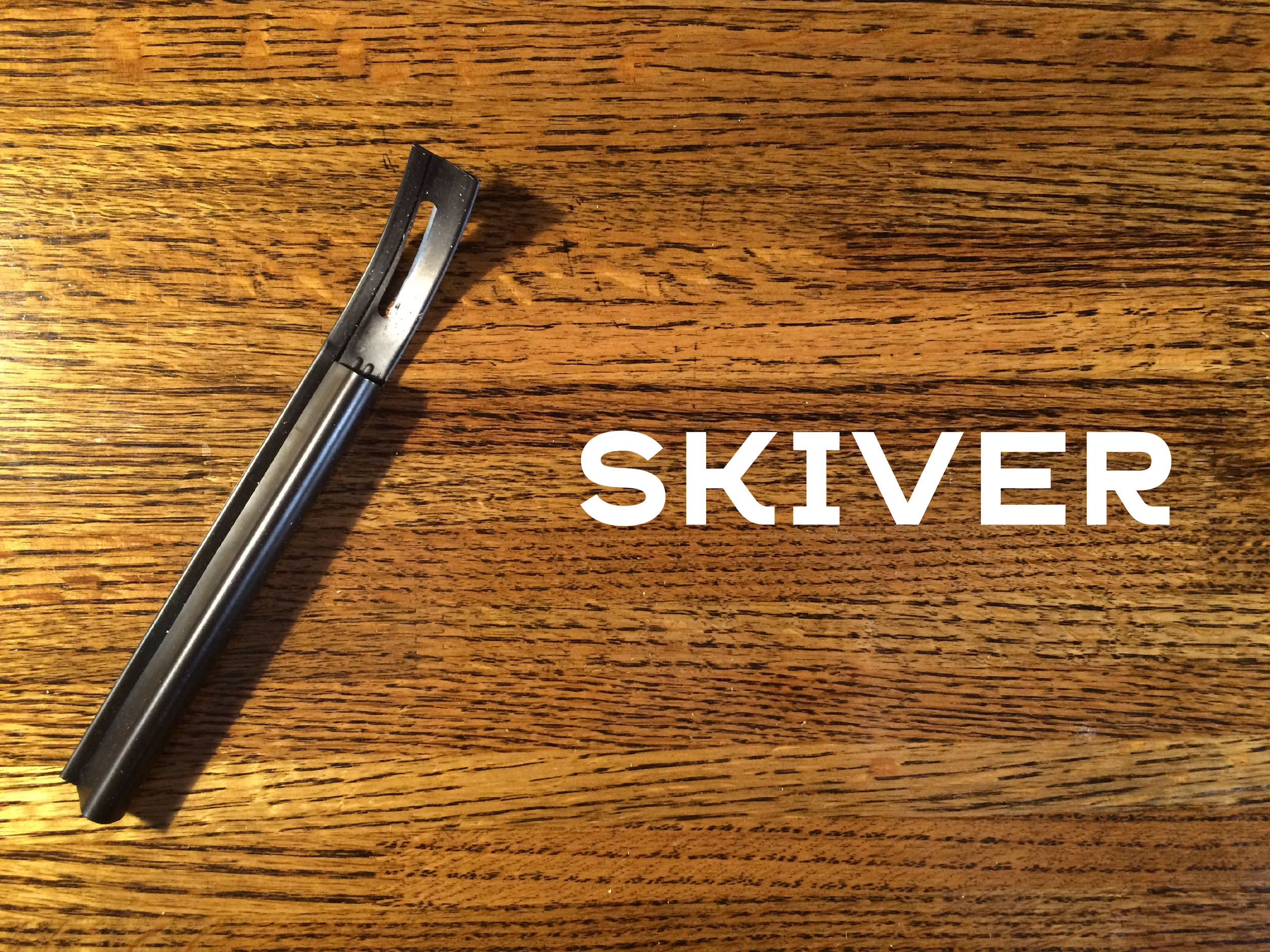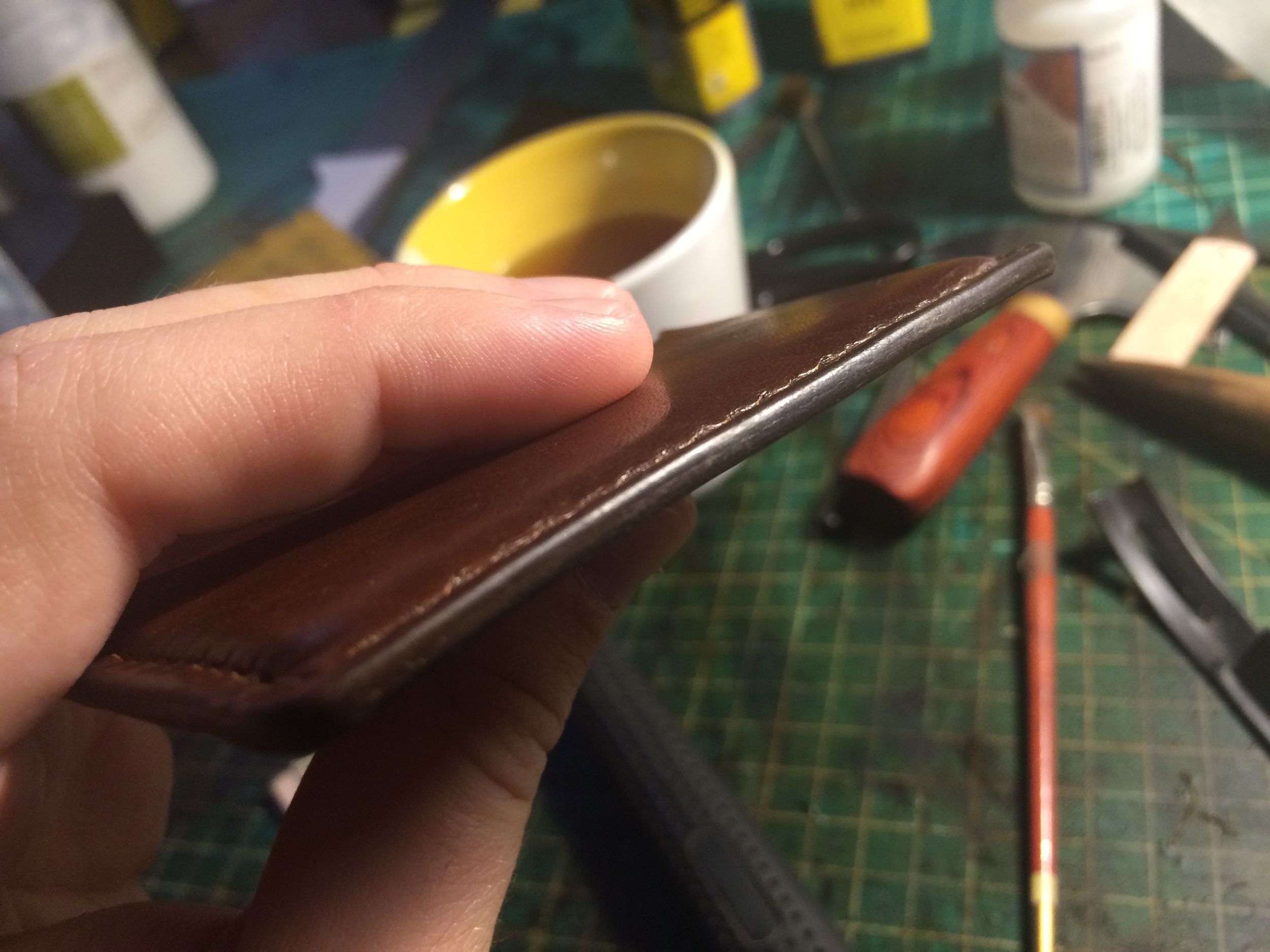Imagine skiving is that evil predator seal and I am poor hapless Buster Blooth. And imagine the sheer horror of attempting to escape an overbearing mother, only to be apprehended by this hand eating seal. That feeling of dread, is the dread that fills my heart when I know I have to skive something. Sure it's a little dramatic, but skiving and I really did start off on the wrong foot.
The first time I attempted to skive anything was on my second project, which was a purse I made for my wife. I've referenced this purse before in a post about rivets, so I won't say much about it, other than I made it with the first piece of leather I ever bought, which was a really rough 8oz piece of veg tan. Really stiff 8oz leather may be great for, say a belt, but horrible for a purse. So instead of buying an entire new piece of leather I thought I’d be clever and skive the entire thing.
I was not clever.
What resulted was about six to eight hours of extreme frustration while I tried to skive all of this 8oz leather down to about 5oz. And I tried really hard to keep it all smooth, but it ended up extremely pitted. To make matters worse, I was using a super skiver (which I didn’t even really know what that was at the time) and started to rush towards the end as I got more and more impatient. That, of course, only resulted in me cutting a hole completely through a few pieces of leather and having to start all over again.
Long story short, it was a horrible mess, and I still have some angst towards skiving.
I had no idea what I was doing. Super skivers aren’t meant to be used that way. Normal skivers aren’t supposed to be used that way either. What I really needed was a splitter.
So, here’s some things I’ve learned along the way about skivers that I wish I would’ve know prior to making that purse.
Skiver vs. SUPER Skiver vs. Splitter:
It helps to think of these three tools as different versions of one another. They all do the same thing, but to a different capacity.
This is the smallest, and it's for reducing the thickness of leather in small areas. It’s most common function is skiving edges, which will make an edge less bulky. This is normally desirable if you have two pieces of leather stacked on top of each other. Think of a wallet that can hold multiple cards. Each card is held in place by a different piece of leather, yet the edge is all a uniform thickness and not extremely bulky. This was achieved by reducing the edge's thickness by means of a skiver.
This pretty much works like a skiver, just more so. The depth and width of your cuts are amplified… and so are your mistakes. I actually find the super skiver to be a lot less of a controlled process than the normal skiver. I would not recommend using a super skiver on leather that wasn’t at least 8oz thick. It would cut all the way through on thin leathers like 3oz, and even on something like 6oz leather, I think it’s too easy to make mistakes. Where the super skivers really shines, however, is with belts. Most people, myself included, skive the ends of their belts that fold over, around the buckle. This prevents the belt from being to bulky. It’s really nice to be able to skive that quickly with the super skiver. It usually only takes two or three passes with a super skiver as opposed to the eight to ten it would probably take with a normal skiver.
Splitter:
If we are sticking to this super thing, its basically like a super super skiver… but it does work a bit differently. The blades of skivers and super skivers are bowed in the middle, which means your cut is going to be made across the middle of your blade. A splitter blade is flat and cuts across the entire blade. Splitters reduce the thickness of the entire piece of leather, instead of just parts of it. This is what I had hoped to do with the purse: take all the 8oz leather and make it 5oz. I don’t currently own one of these because they will cost you a bit of money, but it would definitely be nice to own a splitter one day.
Tips for a Skiver:
1. Using a skiver doesn’t take much force, so you can hold the leather still as you skive it with just a few fingers. This is great because it lets you skive using both hands, which gives you a lot more control.
2. Additionally, skivers can get kind of stuck in the leather as you use it. Usually this happens when you accidentally bury it too deep in the leather. There are two things you can do when this happens. Take the skiver out and skive the other direction. Or continue to pull, but pull up as you do it. If you decide to continue the skive and pull up, which is what I prefer, having both hands to gently rock it back and for while tilting it upwards really helps to smooth out the mistake.
3. When skiving an edge, always have your skiver at an angle. Rest the back end of the skiver on the table and angle the blade, so that the middle of the blade is on the edge of the leather. Resting the back part of the skiver on the table as you skive will help you maintain a consistent angle.
Tips When Using a Super Skiver:
Take these tips with a grain of salt because, as I have already mentioned, my skill with a super skiver is not… super.
1. I’ve noticed that the super skiver has a natural tendency to want to bury itself in the leather. I will pull down into the leather as I attempt to sink the skiver to the depth that I need it, but then pull the skiver up and towards me about 15% to fight against it sinking further.
2. To get a flat surface, know that you are going to have to overlap your cuts. As mentioned earlier the blade is curved, with the lowest point in the middle. If you are trying to skive more than just an edge you will have to over lap your cuts about 1/3 on either side to get a nice flat surface.
3. Clean out your blade. Skivers in general, but especially super skivers, tend to get bits of leather stuck between the blade and the tool. This makes the cuts much worse for two reasons. First they won’t be as even or smooth. And second, it pushes the blade further away from the tool making your cuts deeper than normal.
4. Finally make sure to sharpen and replace your blades. If I'm being thrifty, I will sometimes take the blade out and strop it. This keeps it sharp for awhile, but if I am still having problems after stropping it, I just replace the blade. The replacement blades are much cheaper than the leather you’re about to make a mistake on, so don’t be afraid to throw them out and replace them. Do be careful when replacing them though. Sometimes the replacement blades aren’t consistently sharp. If this is the case I’ll throw that one out until I find a good one.
All in all, I really prefer the normal skiver to the super skiver. I find that it can accomplish the same thing, in about the same amount of time, with a lot more control, and that control is really what is most important to me.
I’m really hoping these tips keep you from being traumatized like I have been. Let me know if you have a skiving tip I left out, or an Arrested Development gif you can somehow relate to leatherworking. Here’s to a brighter skiving future.




